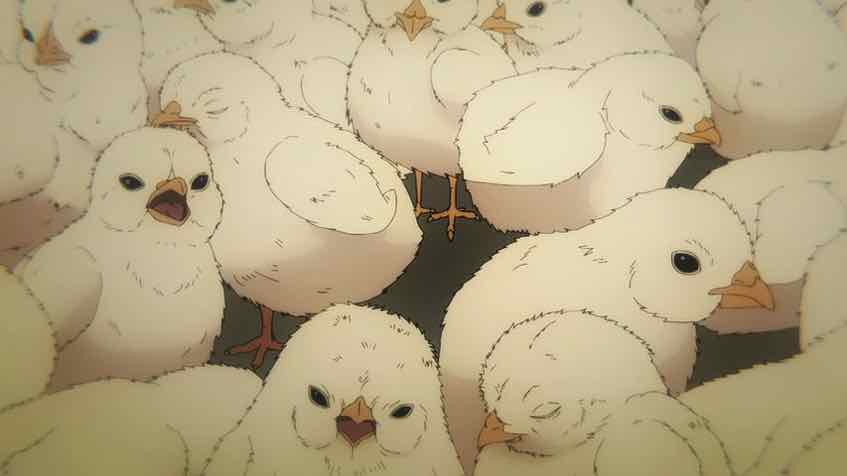 We seem to be developing a bit of a similar syndrome here to something like Hourou Musuko. That is, an adaptation where new viewers think it’s great but manga readers insist they don’t, actually. When a series is trying to adapt 11 volumes (and counting) in 13 episodes that sort of thing is going to happen. It calls to mind something like another NoitaminA series, Sakamichi no Apollon, where Watanabe Shinichirou managed to make something magical for about half a cour before the manic pacing finally caught up and the whole structure pretty much collapsed.
We seem to be developing a bit of a similar syndrome here to something like Hourou Musuko. That is, an adaptation where new viewers think it’s great but manga readers insist they don’t, actually. When a series is trying to adapt 11 volumes (and counting) in 13 episodes that sort of thing is going to happen. It calls to mind something like another NoitaminA series, Sakamichi no Apollon, where Watanabe Shinichirou managed to make something magical for about half a cour before the manic pacing finally caught up and the whole structure pretty much collapsed.
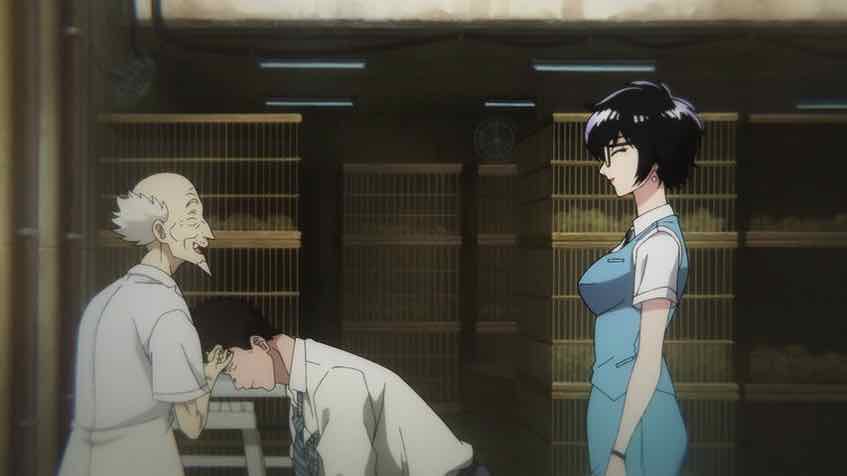 Is that a fait accompli to happen with Kowloon Generic Romance? Certainly not. Trying to do what this show is trying to do is a big challenge, no doubt. But choices matter. Watanabe made some bad ones, and his adaptation ultimately suffered for it. Aoki and Okada made a very good one with Hourou Musuko – given the harsh reality of their schedule, they adapted only the middle (and most essential – and best) of the manga’s main arcs. And as a result their adaptation ultimately succeeded, whatever the haters said.
Is that a fait accompli to happen with Kowloon Generic Romance? Certainly not. Trying to do what this show is trying to do is a big challenge, no doubt. But choices matter. Watanabe made some bad ones, and his adaptation ultimately suffered for it. Aoki and Okada made a very good one with Hourou Musuko – given the harsh reality of their schedule, they adapted only the middle (and most essential – and best) of the manga’s main arcs. And as a result their adaptation ultimately succeeded, whatever the haters said.
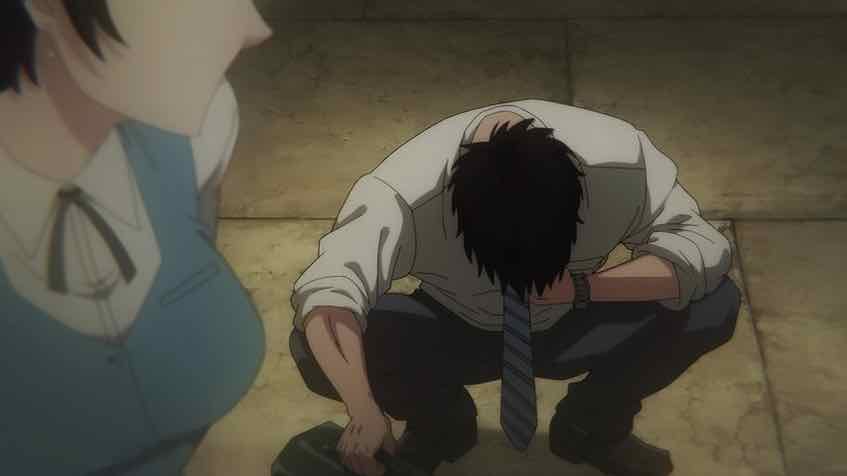 As a new viewer I don’t personally have a sensation of manic pacing in these first three eps, though some apparently do. Things are confusing, but they’re supposed to be. This is a mystery, with sci-fi elements attached. The whole thing has a bit of a Kon Satoshi feel to it and yes, that is a compliment. Both the human story and the MacGuffin are totally working for me, and the world-building is off the charts. I’ve never been to Kowloon (there are parts of old Tokyo and Osaka that conjure up a sense of it, to some degree) but it feels like I’m there. A sense of nostalgia for a place I’ve never been, indeed.
As a new viewer I don’t personally have a sensation of manic pacing in these first three eps, though some apparently do. Things are confusing, but they’re supposed to be. This is a mystery, with sci-fi elements attached. The whole thing has a bit of a Kon Satoshi feel to it and yes, that is a compliment. Both the human story and the MacGuffin are totally working for me, and the world-building is off the charts. I’ve never been to Kowloon (there are parts of old Tokyo and Osaka that conjure up a sense of it, to some degree) but it feels like I’m there. A sense of nostalgia for a place I’ve never been, indeed.
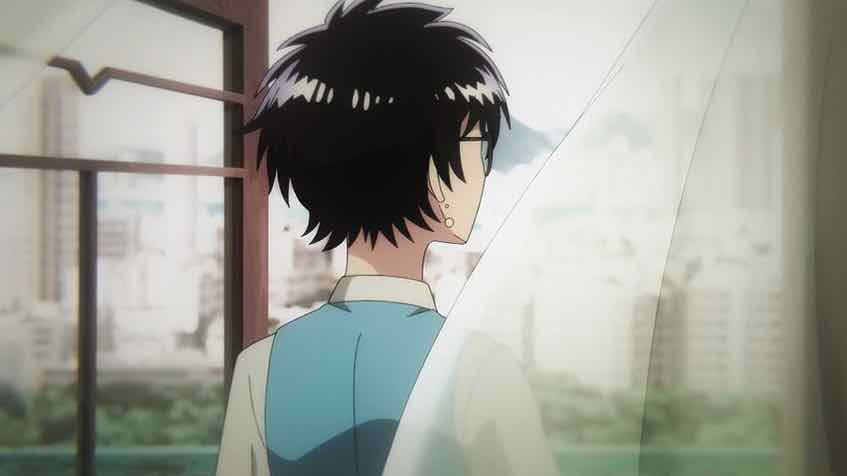 Iwasaki Yoshiaki is not a revered auteur director, but he is supremely experienced and he’s nailing it here. Between his choices and Sataka Ryouhei’s soundtrack the adaptation itself is delivering a great sense of style. But what really is going on here? It’s clear at this point that Reiko is not Kujirai-B, but is somehow living her life. She feels some of the same things, but her personality is markedly different. We know there’s some sort of supercomputer/A.I. influencing Hong Kong, and we have a crazy doctor (who’s possibly also a Shinto deity or youkai) and medical mega-corporation involved.
Iwasaki Yoshiaki is not a revered auteur director, but he is supremely experienced and he’s nailing it here. Between his choices and Sataka Ryouhei’s soundtrack the adaptation itself is delivering a great sense of style. But what really is going on here? It’s clear at this point that Reiko is not Kujirai-B, but is somehow living her life. She feels some of the same things, but her personality is markedly different. We know there’s some sort of supercomputer/A.I. influencing Hong Kong, and we have a crazy doctor (who’s possibly also a Shinto deity or youkai) and medical mega-corporation involved.
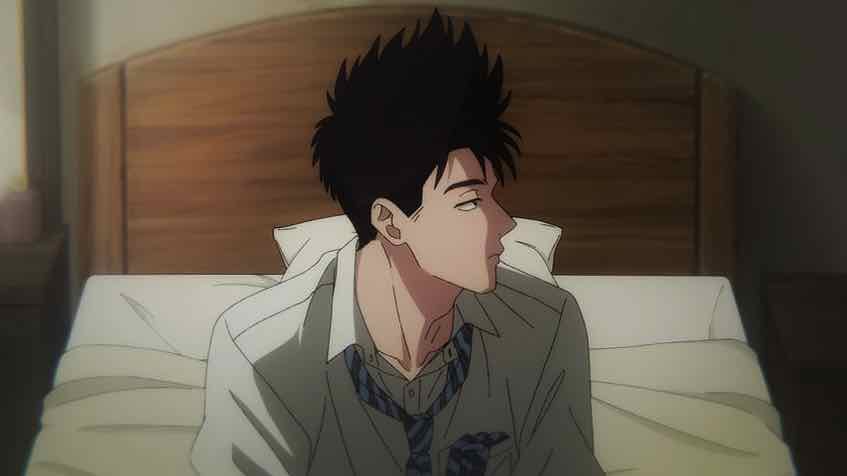 Given all that, all possibilities are still on the table (and most of them have been hinted at). Reiko could be an android of some sort. Or she could be a clone – either one would fit with Hebinuma-sensei’s comments these last two weeks. But another possibility is that this entire setting could be artificial (or virtual at least). The real estate boss made mention of this being a “second Kowloon” in the premiere, and we – pointedly – don’t know what year (only month and day) this present is. The real Kowloon was torn down in the late 80’s – could this be a simulation? Or an an actual physical place, built sometime in the future to recapture the nature of the original (but if so, why)?
Given all that, all possibilities are still on the table (and most of them have been hinted at). Reiko could be an android of some sort. Or she could be a clone – either one would fit with Hebinuma-sensei’s comments these last two weeks. But another possibility is that this entire setting could be artificial (or virtual at least). The real estate boss made mention of this being a “second Kowloon” in the premiere, and we – pointedly – don’t know what year (only month and day) this present is. The real Kowloon was torn down in the late 80’s – could this be a simulation? Or an an actual physical place, built sometime in the future to recapture the nature of the original (but if so, why)?
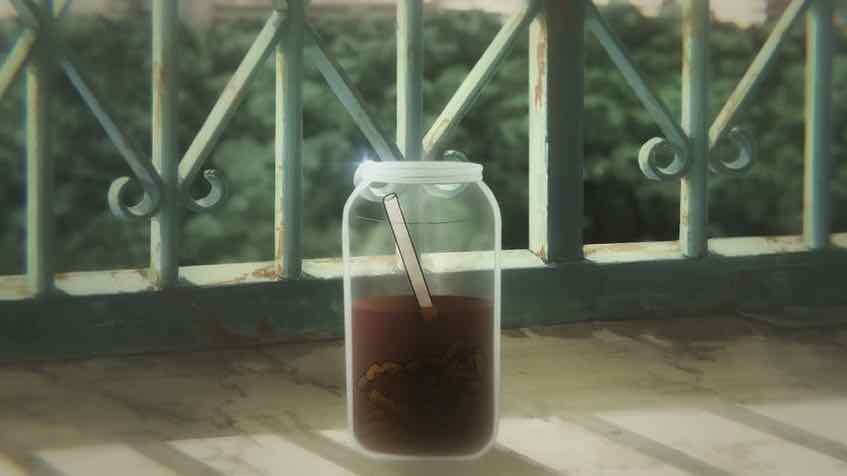 Set against this backdrop, the heavy lifting in Kowloon Generic Romance is the slice of life, peppered with oddities. Kujirai-B has tap water in the fridge. Hajime goes to look for it in Reiko’s but finds watermelon instead. Xiaohei comes looking for an apartment, and at Reiko’s suggestion that she live downtown Xiaohei says she doesn’t want to leave Kowloon – and “that’s how I felt back then, too” (see above theory). Reiko fails, but Hajime succeeds with a quirky choice which only she would appreciate. Reiko gives him a sunflower as thanks for carrying home her new fish tank (for “Success” the goldfish), which Xiaohei confirms is the flower expressing “I only have eyes for you”, and Hajime promptly lets wither.
Set against this backdrop, the heavy lifting in Kowloon Generic Romance is the slice of life, peppered with oddities. Kujirai-B has tap water in the fridge. Hajime goes to look for it in Reiko’s but finds watermelon instead. Xiaohei comes looking for an apartment, and at Reiko’s suggestion that she live downtown Xiaohei says she doesn’t want to leave Kowloon – and “that’s how I felt back then, too” (see above theory). Reiko fails, but Hajime succeeds with a quirky choice which only she would appreciate. Reiko gives him a sunflower as thanks for carrying home her new fish tank (for “Success” the goldfish), which Xiaohei confirms is the flower expressing “I only have eyes for you”, and Hajime promptly lets wither.
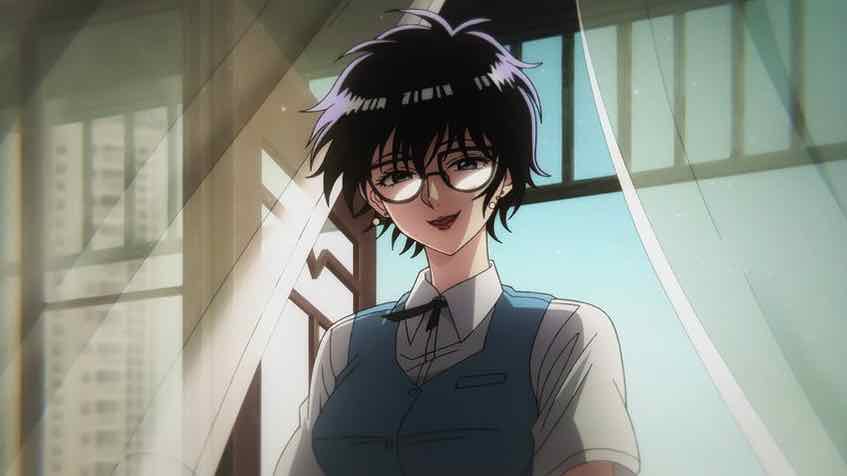 What about Gwen (Ban Taito), the vanished bartender from Goldfish Tea House? Gwen shows up in masked form here, investigating Reiko. Then in Hebinuma’s office, apparently in the aftermath of a sexual encounter. And then on a rooftop with Reiko, where he confirms that she is indeed living someone else’s life. This seems to be a different Gwen too, as he acknowledges in his conversation with Hebinuma. Reiko goes so far as to openly express her love for Hajime, at the same time confirming that she’s aware that she’s not the original Kujirai Reiko. Perhaps something she was never intended to do.
What about Gwen (Ban Taito), the vanished bartender from Goldfish Tea House? Gwen shows up in masked form here, investigating Reiko. Then in Hebinuma’s office, apparently in the aftermath of a sexual encounter. And then on a rooftop with Reiko, where he confirms that she is indeed living someone else’s life. This seems to be a different Gwen too, as he acknowledges in his conversation with Hebinuma. Reiko goes so far as to openly express her love for Hajime, at the same time confirming that she’s aware that she’s not the original Kujirai Reiko. Perhaps something she was never intended to do.
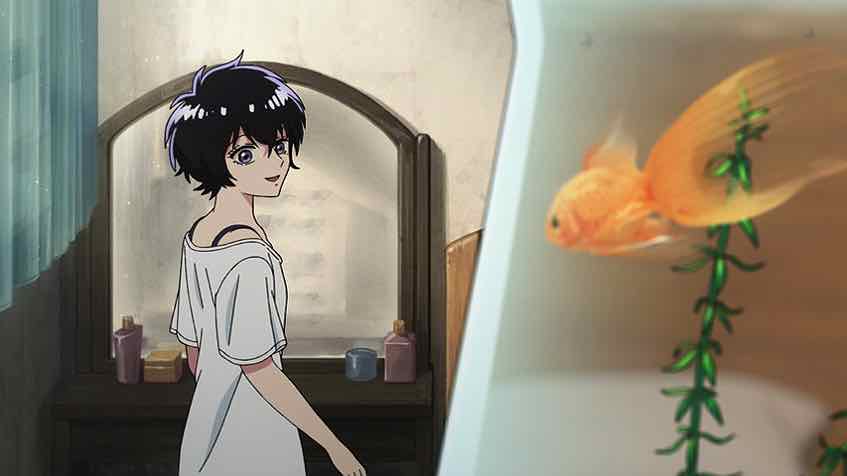 One way or another, the symbolism in that final scene on the rooftop irrefutably suggests that the original Kujirai Reiko is dead. As is often the case with this sort of series, I find myself less interested in the truth behind the mystery (though certainly still interested) and more so in the emotional interplay between the characters and the details of the setting. Kowloon Generic Romance is full of subtlety and depth, and this adaptation is expertly painting a picture of these characters and the place they call home. The details are important, but I’m in no hurry to break the mysterious spell their absence is weaving.
One way or another, the symbolism in that final scene on the rooftop irrefutably suggests that the original Kujirai Reiko is dead. As is often the case with this sort of series, I find myself less interested in the truth behind the mystery (though certainly still interested) and more so in the emotional interplay between the characters and the details of the setting. Kowloon Generic Romance is full of subtlety and depth, and this adaptation is expertly painting a picture of these characters and the place they call home. The details are important, but I’m in no hurry to break the mysterious spell their absence is weaving.


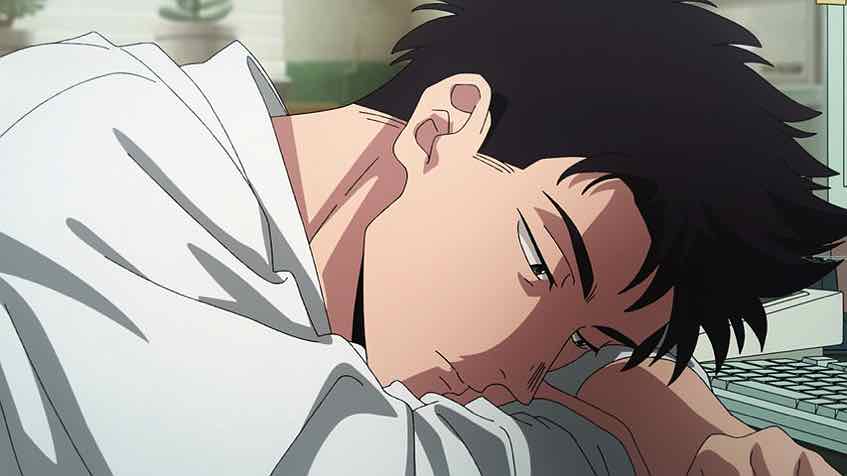
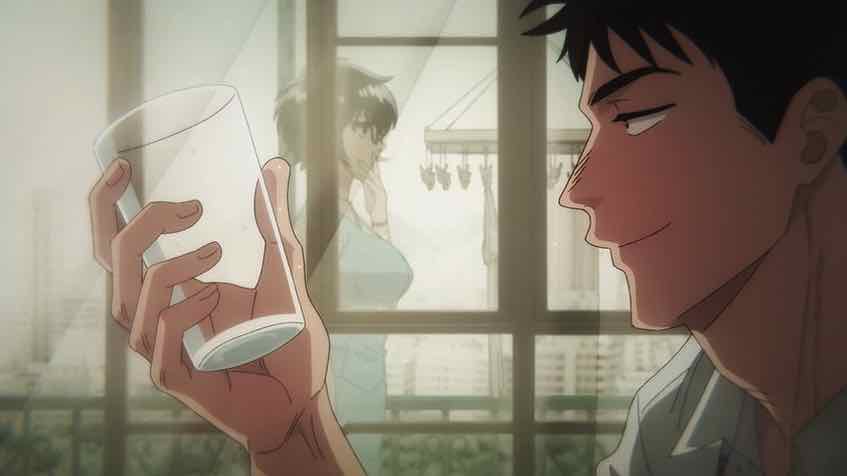
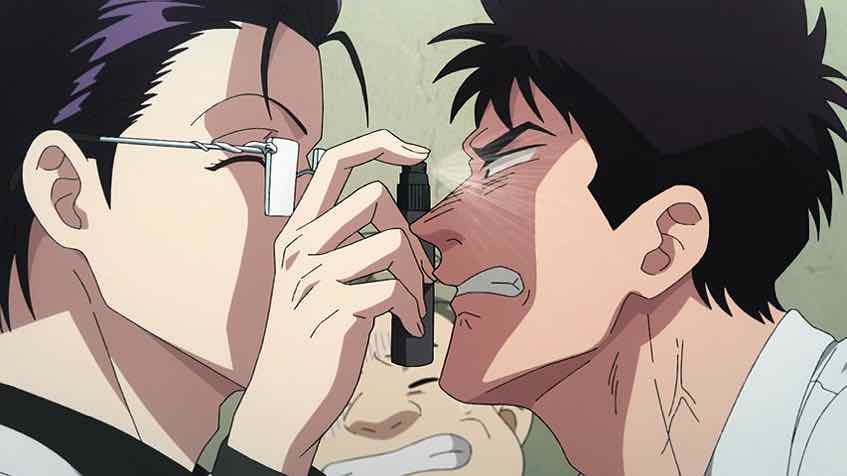
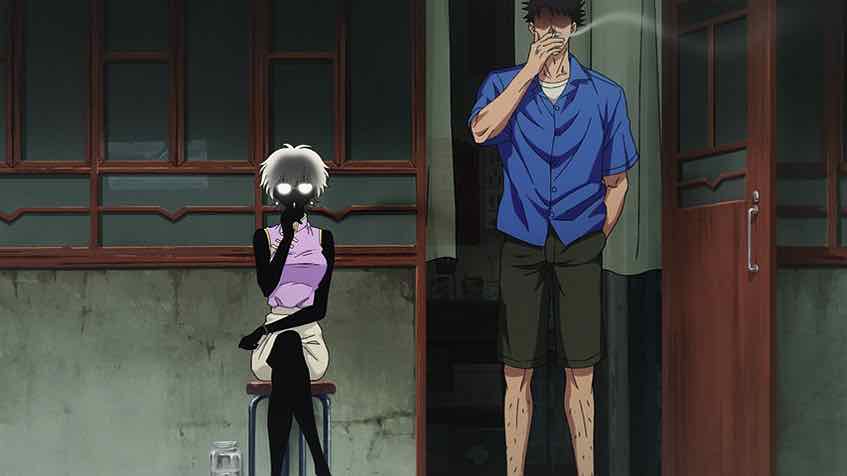
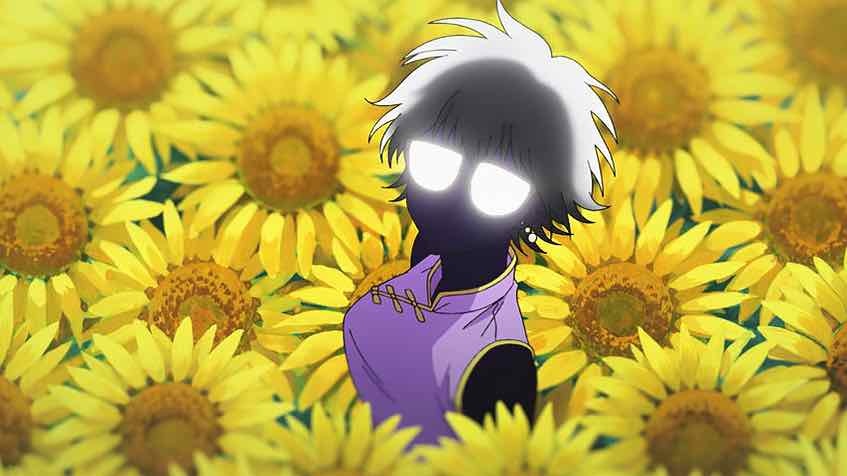
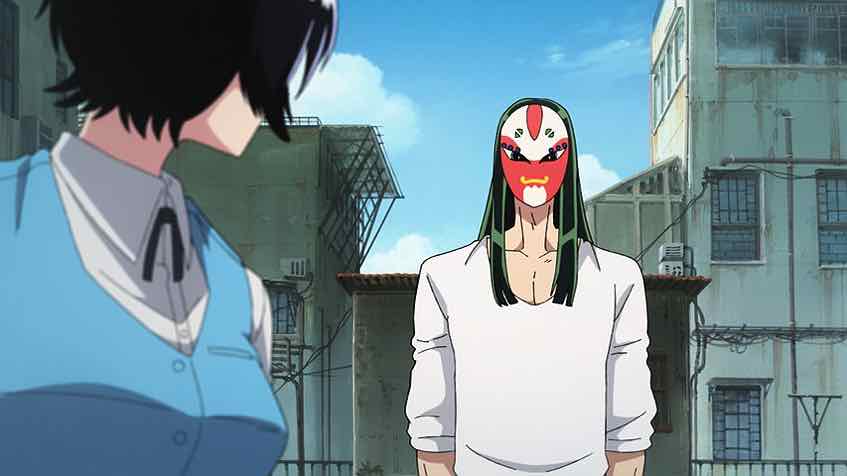
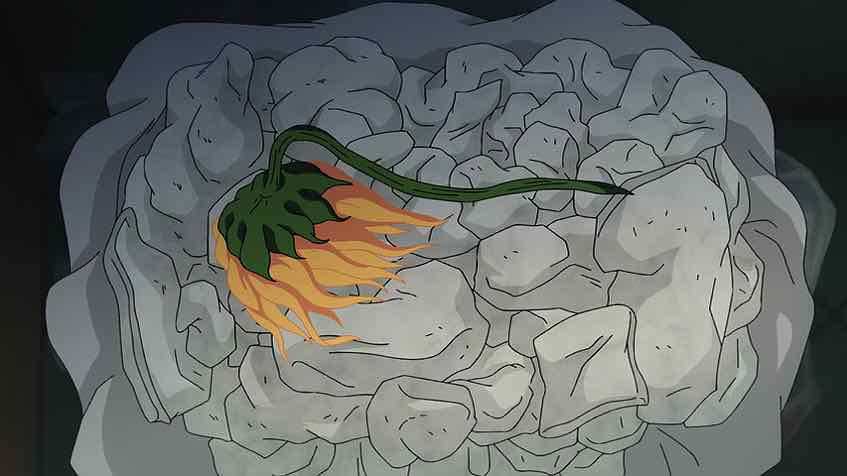
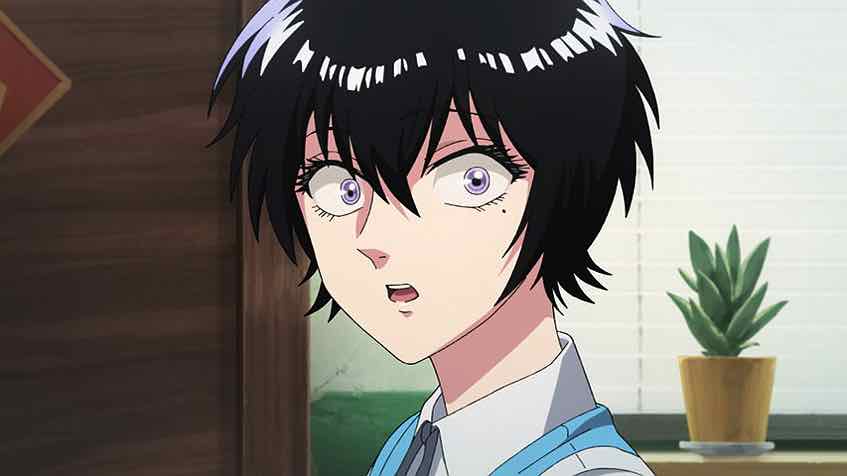
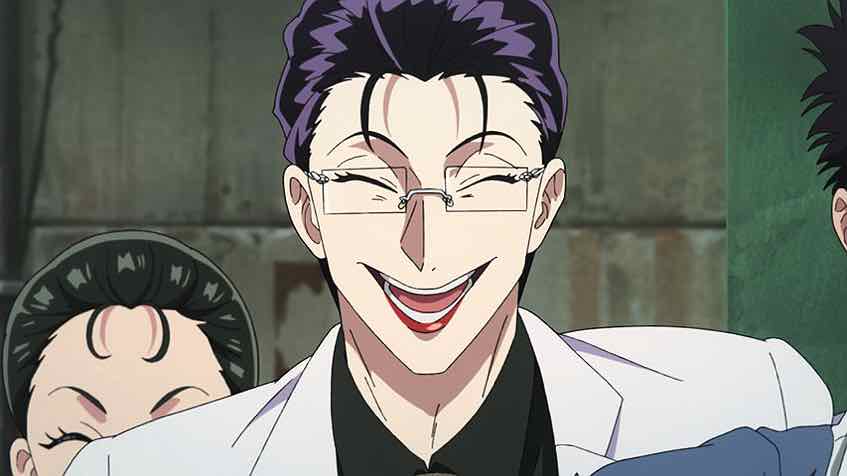
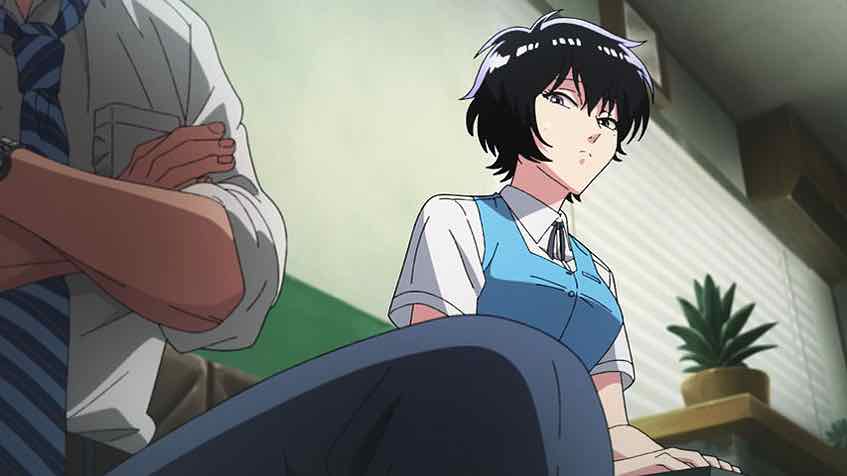
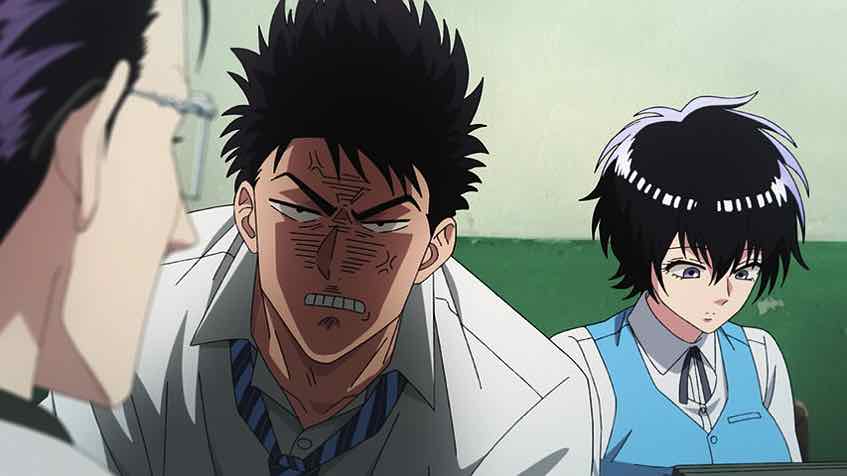
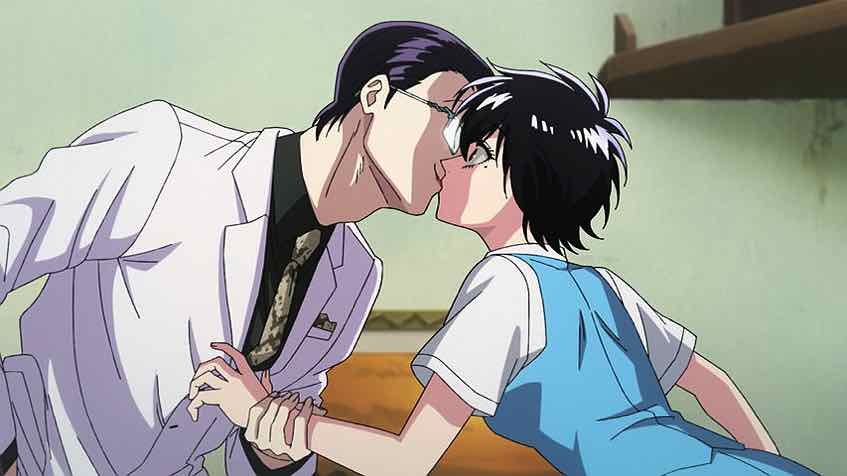
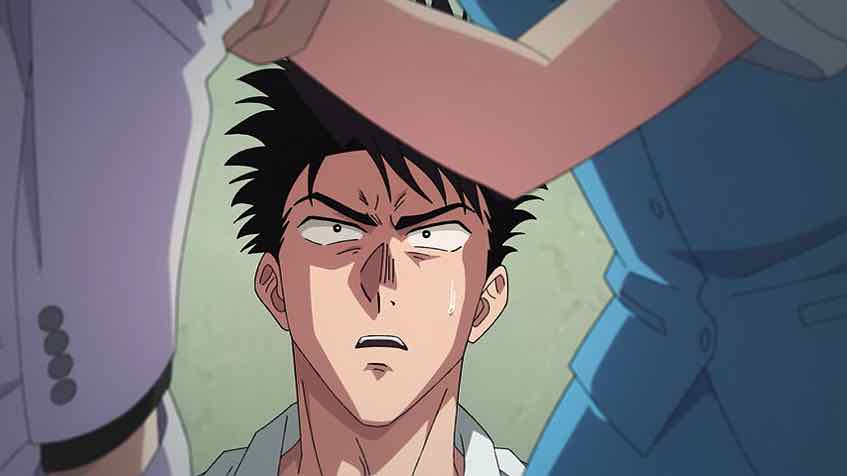
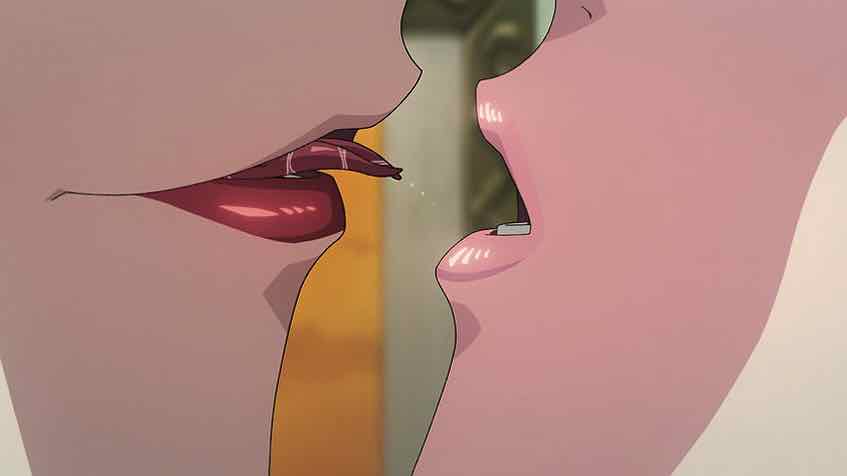
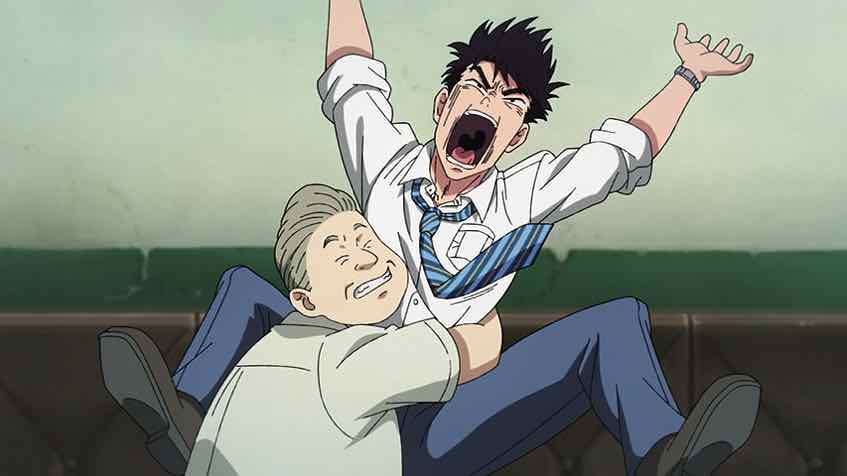
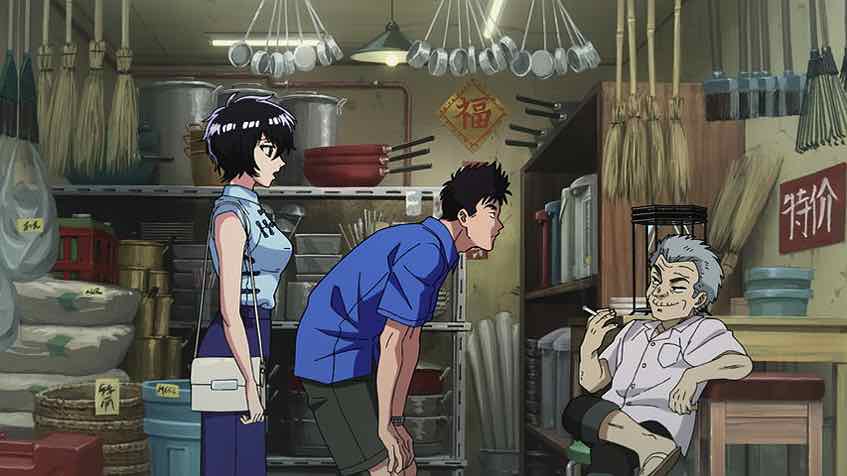
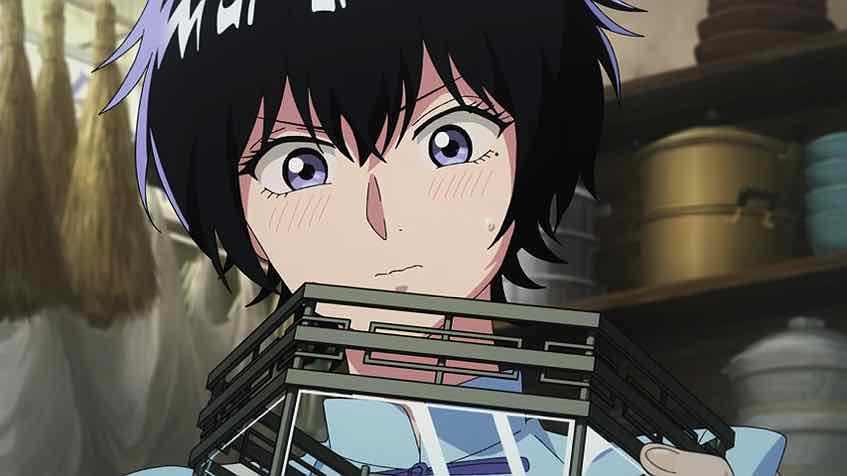
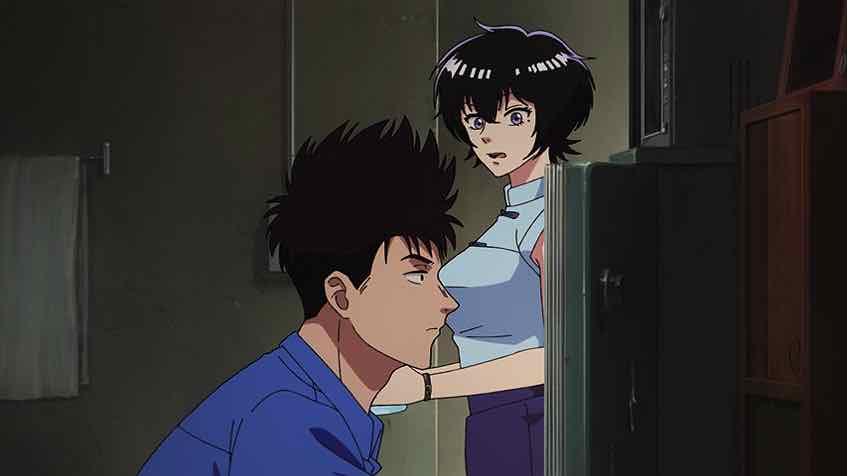


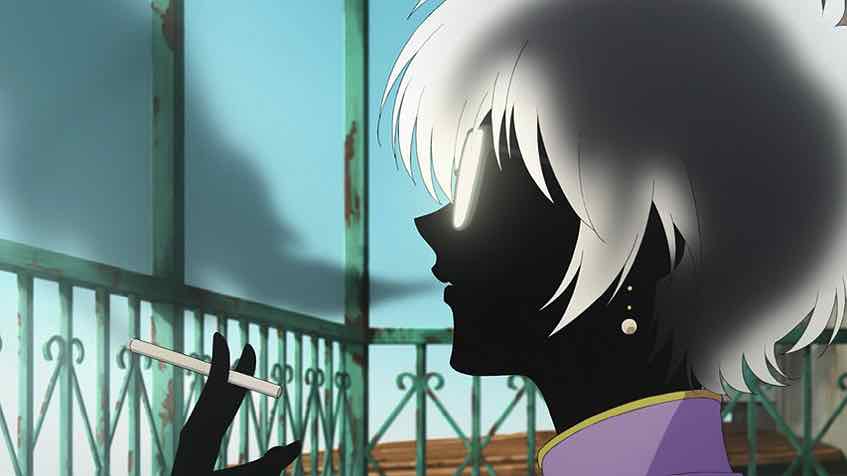
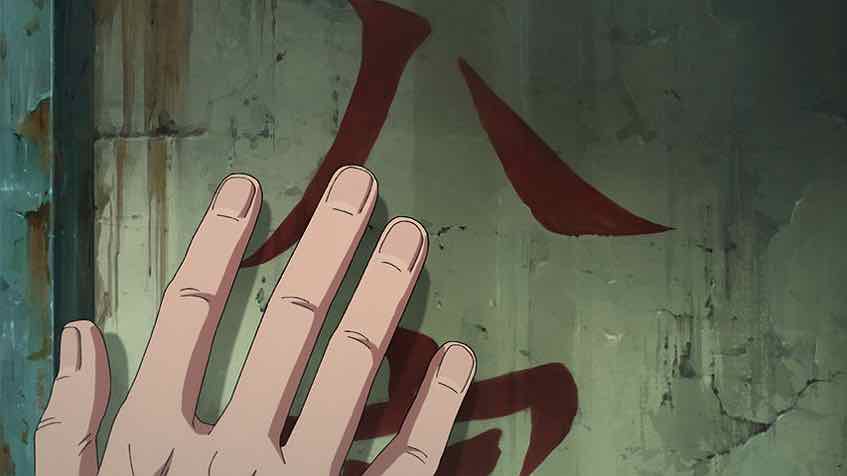
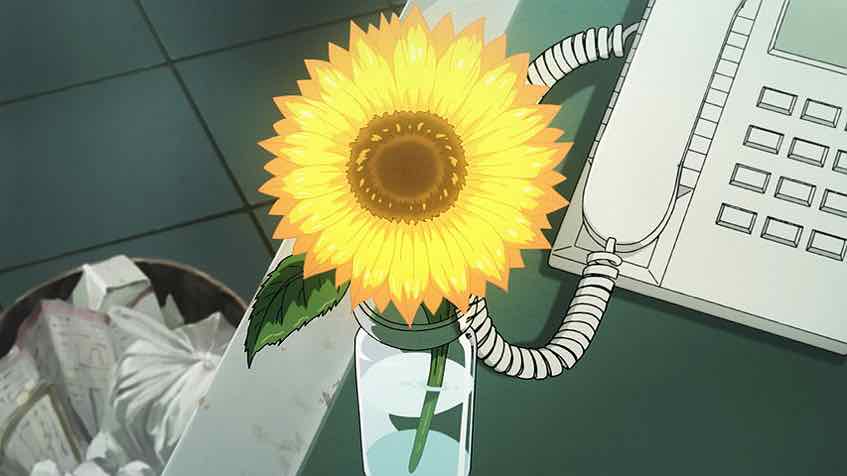
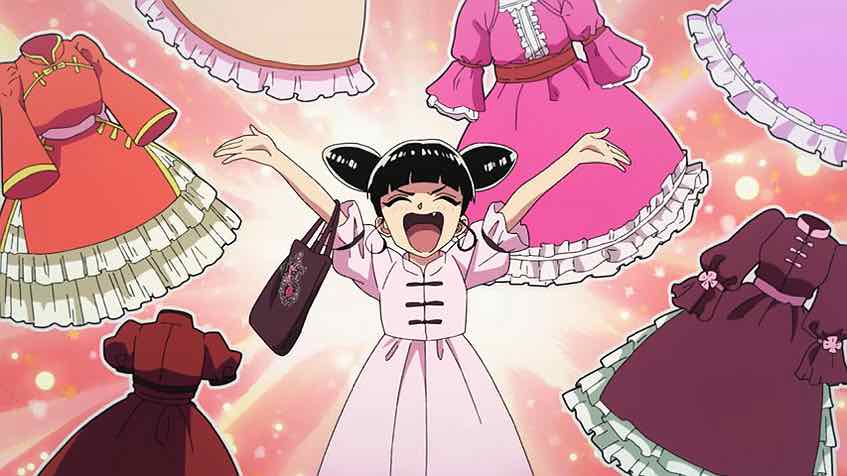
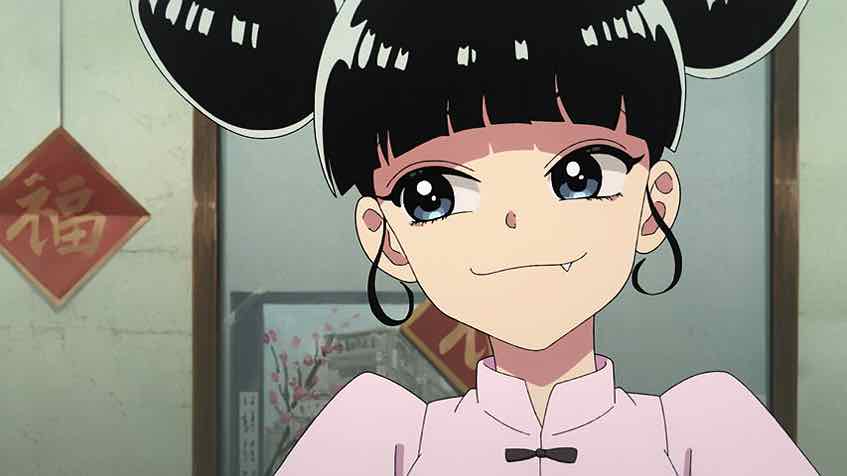
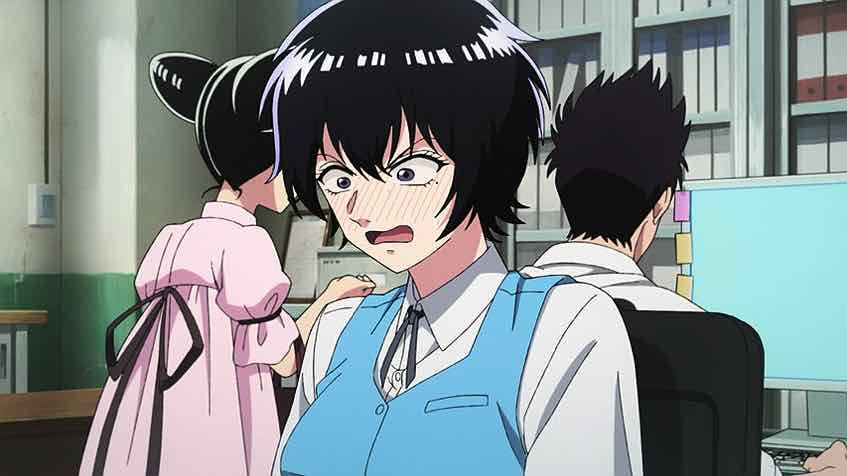
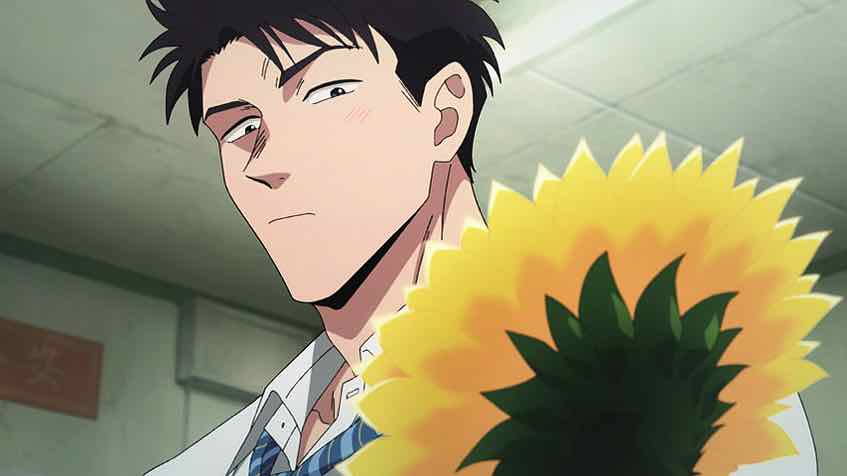
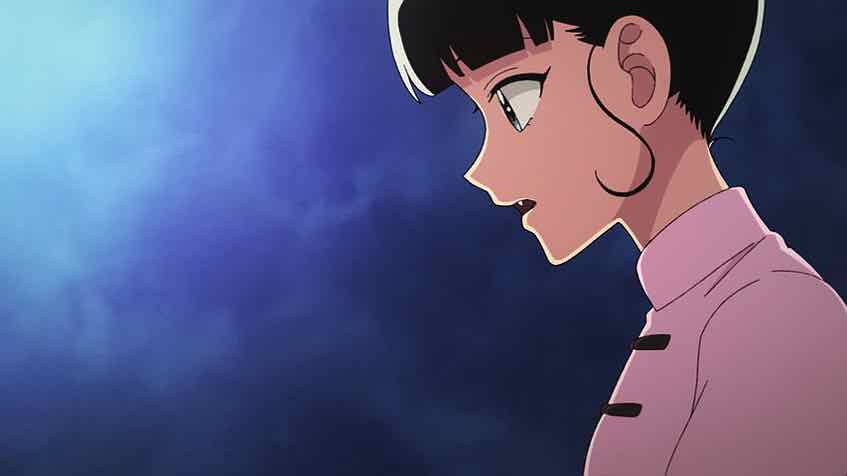
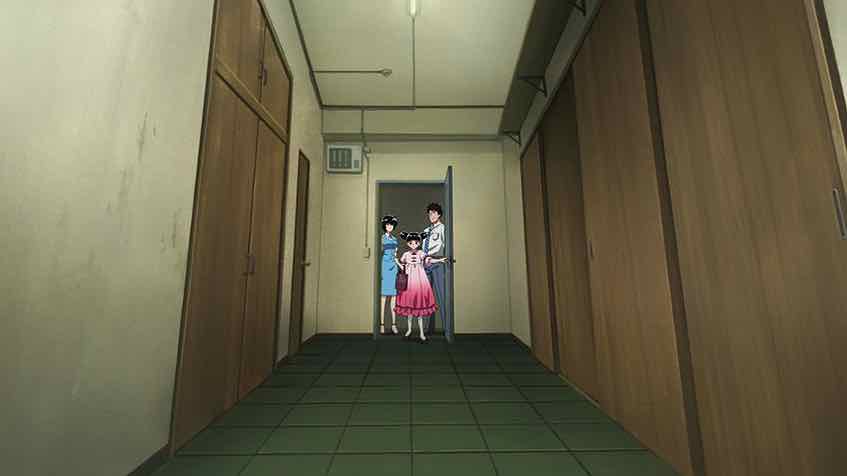
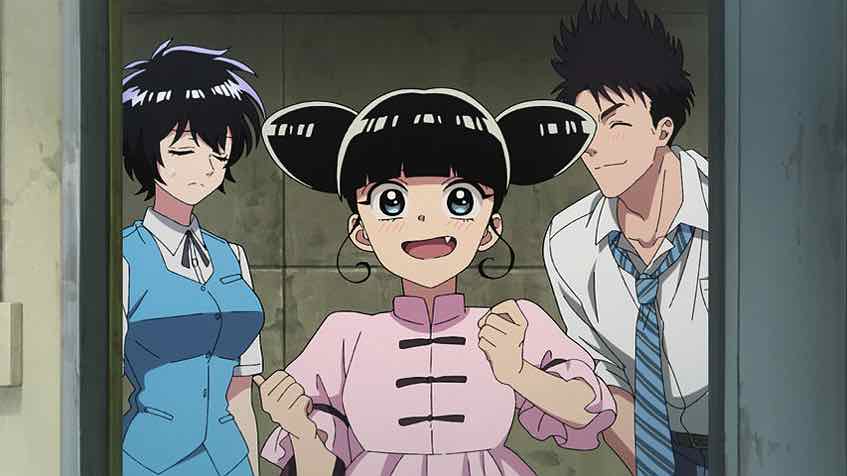

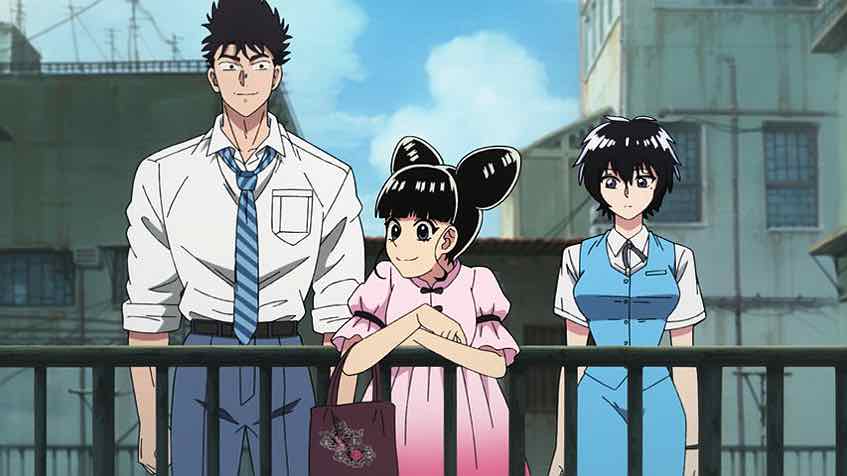
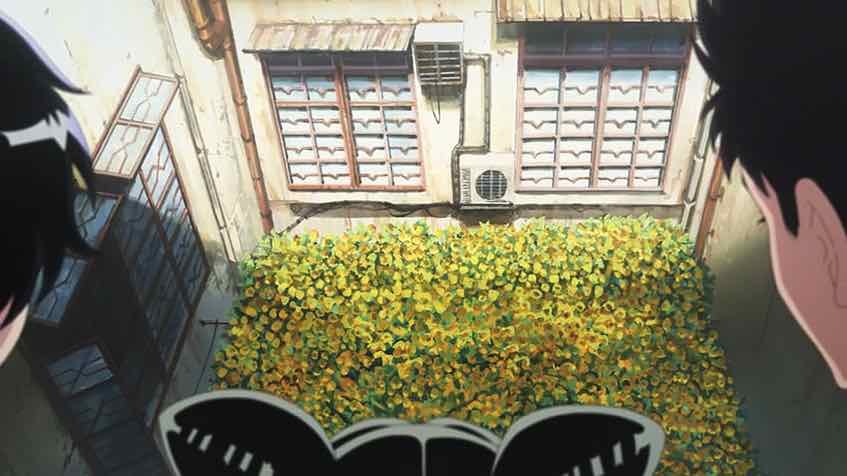
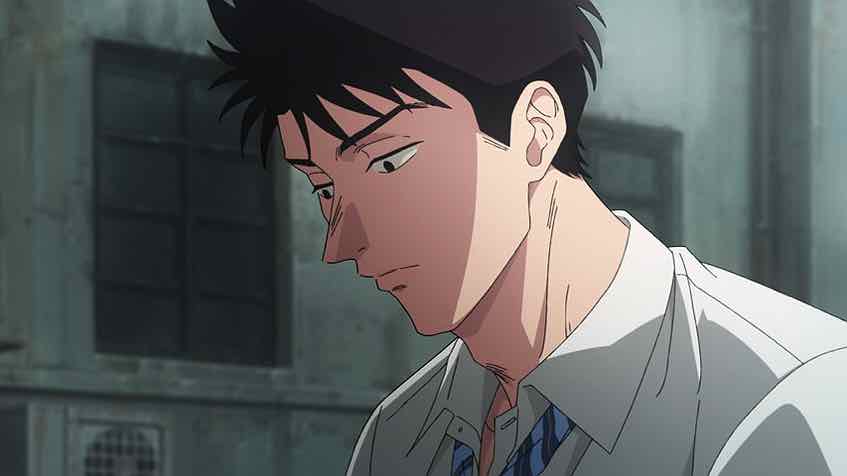
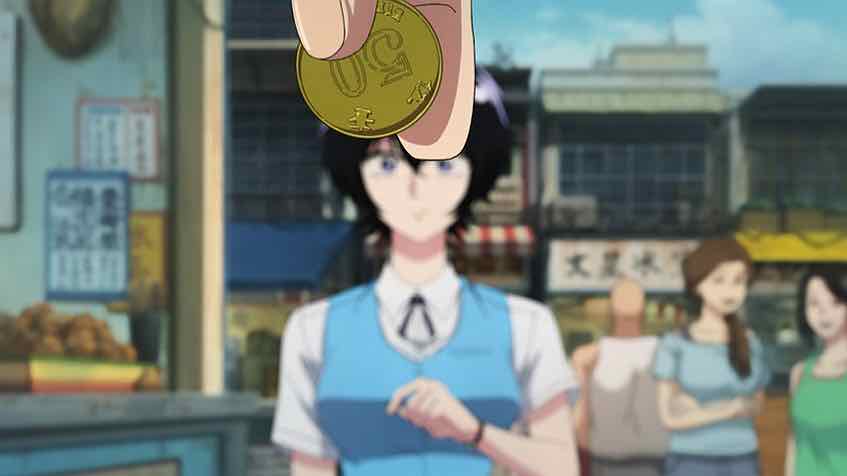

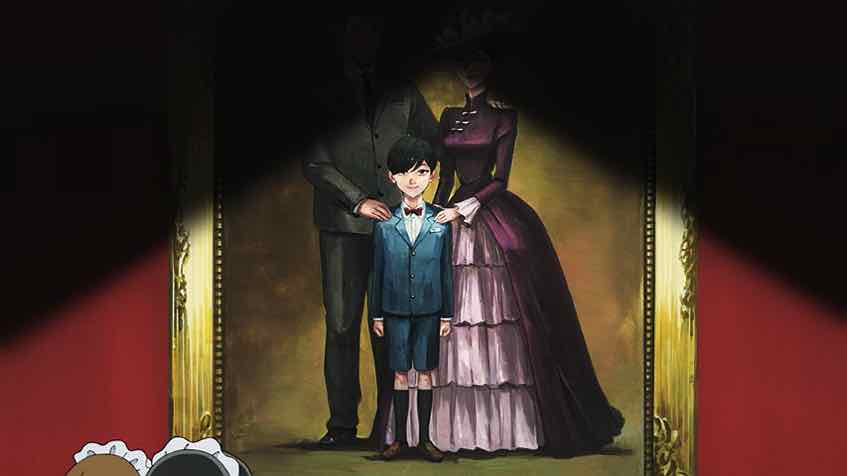
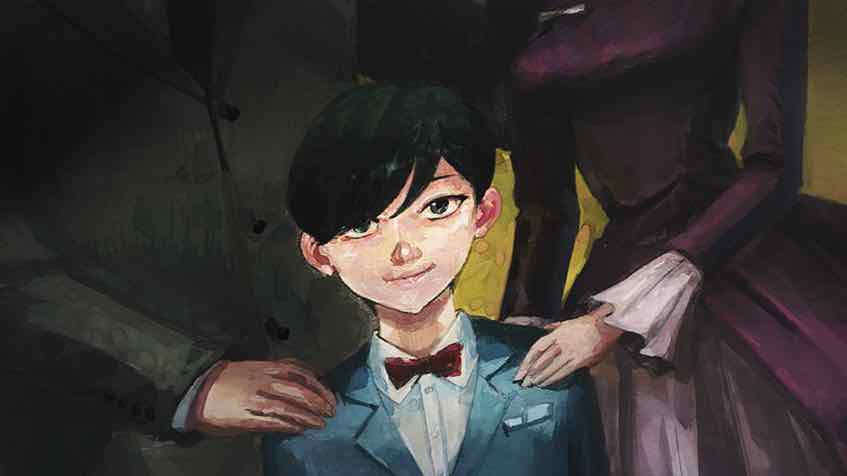
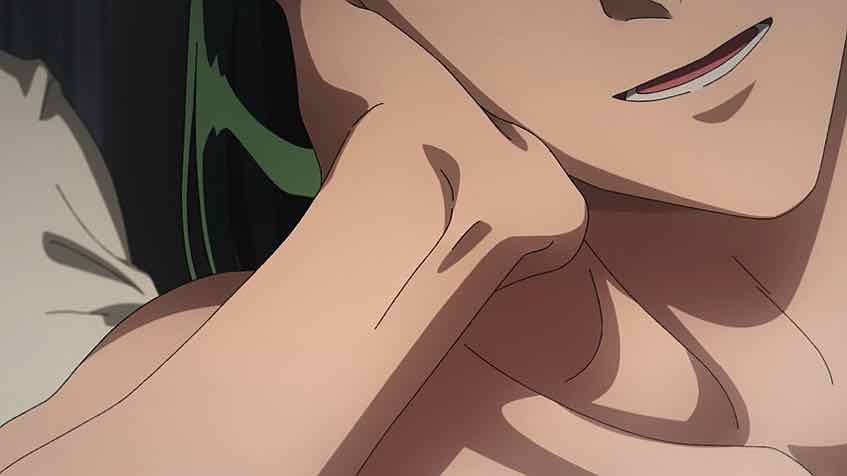
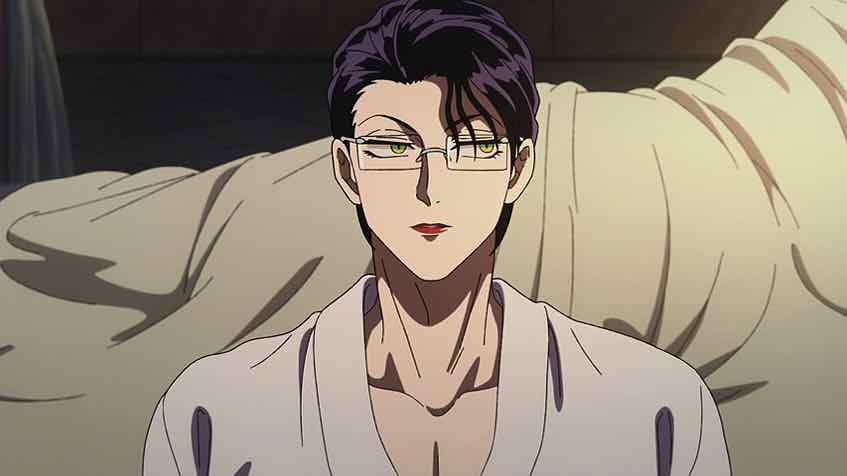
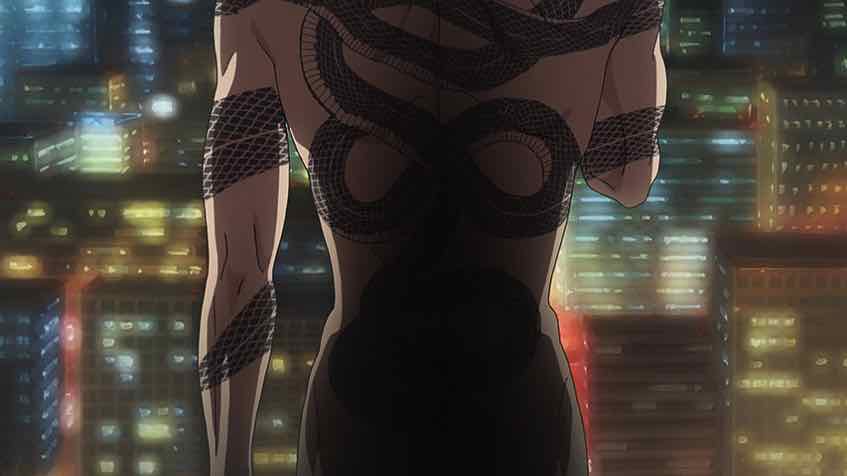
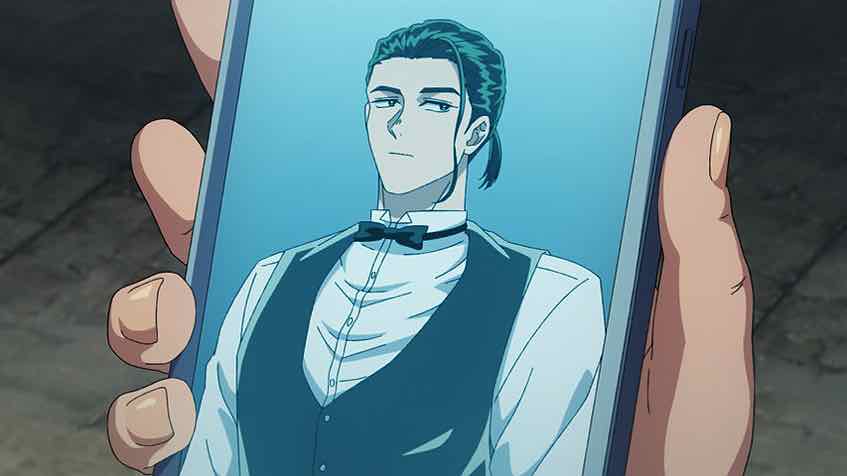
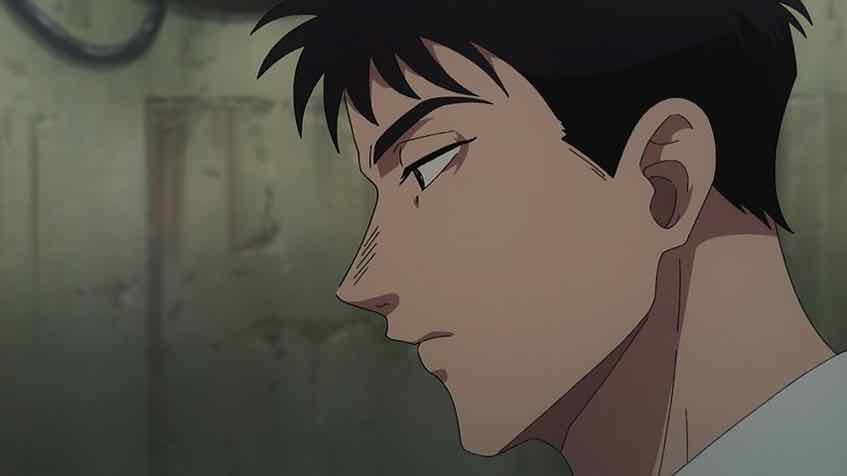
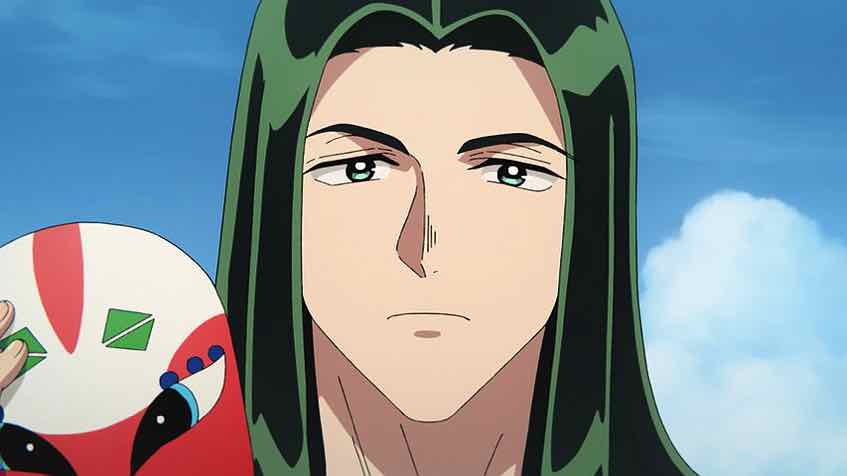
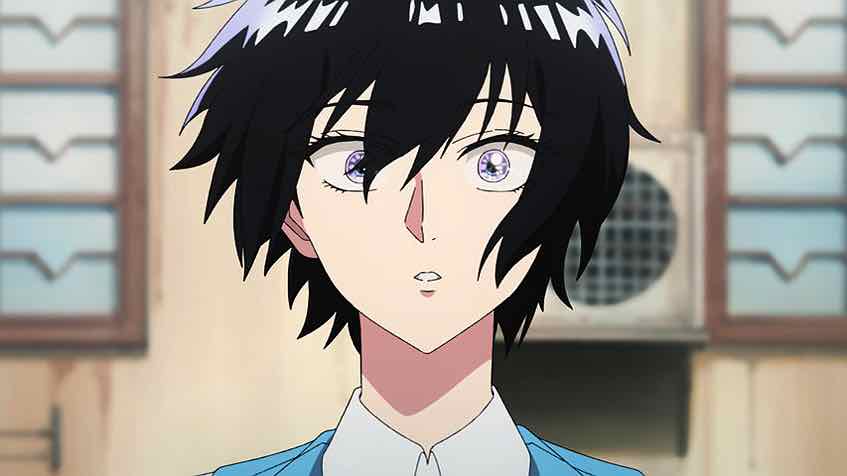
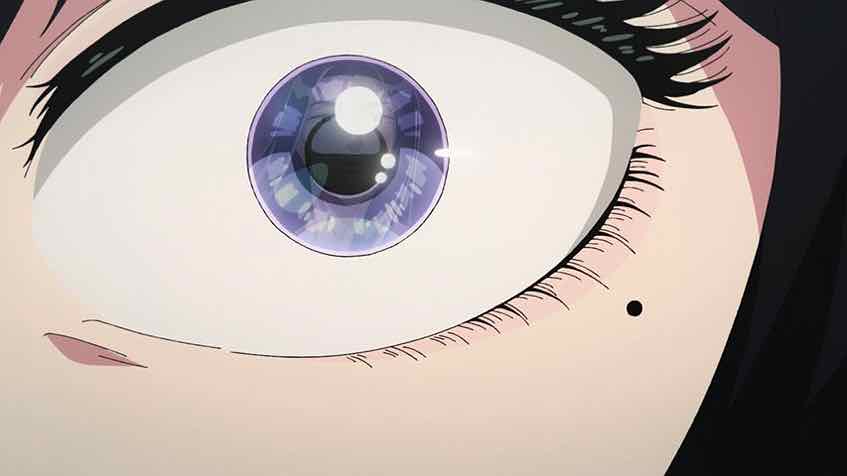

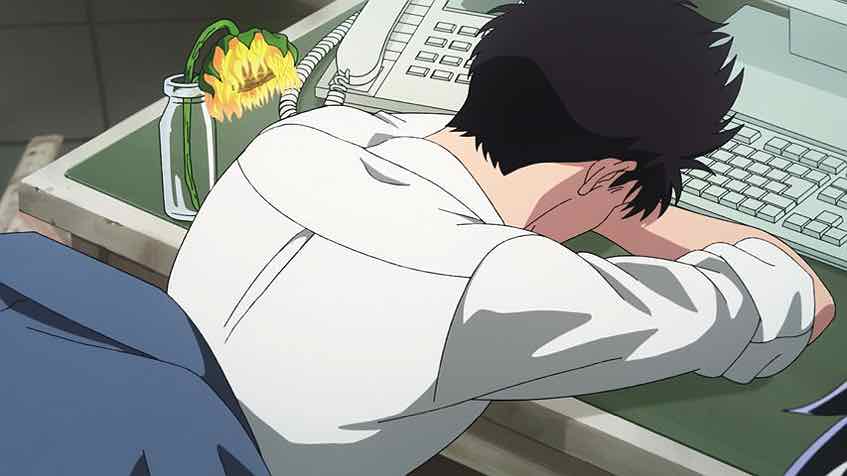
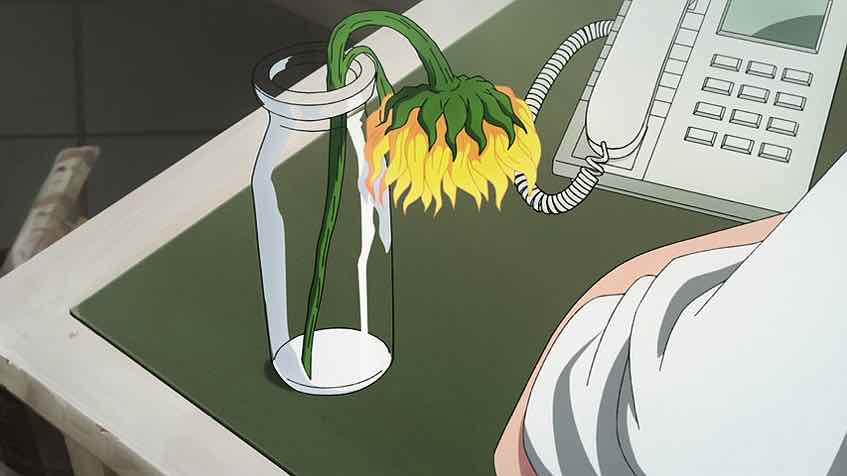
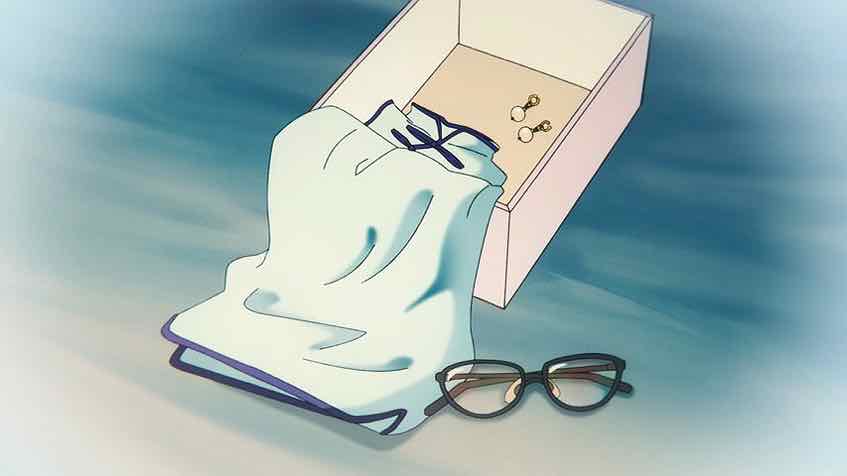
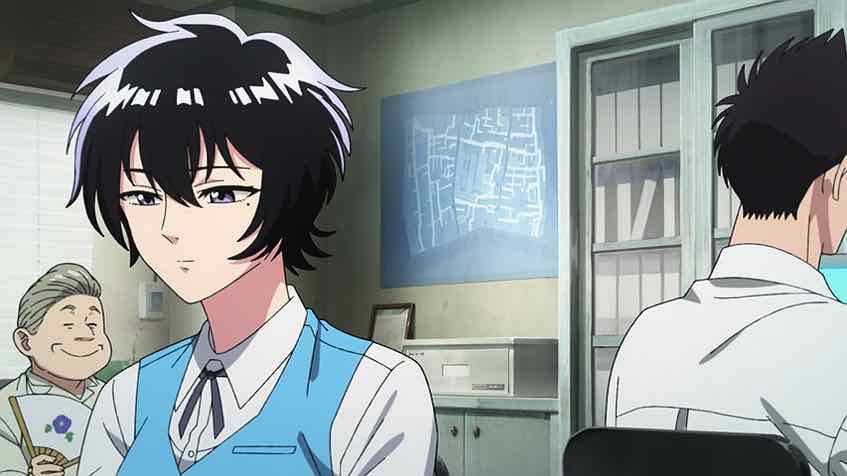
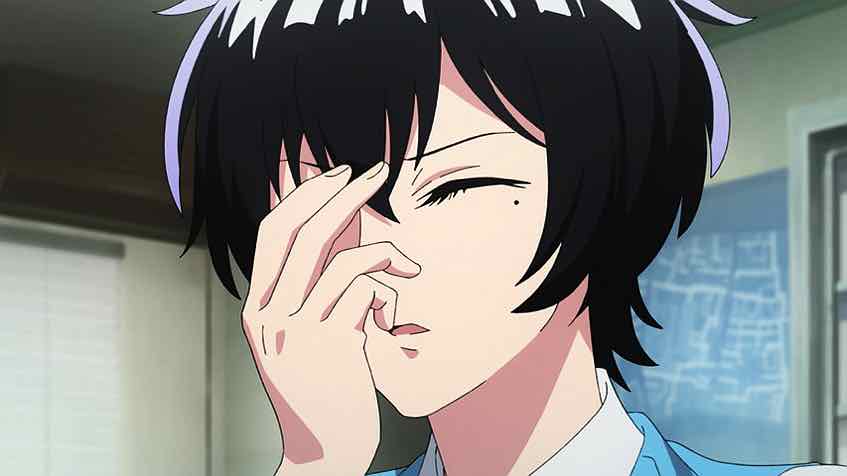
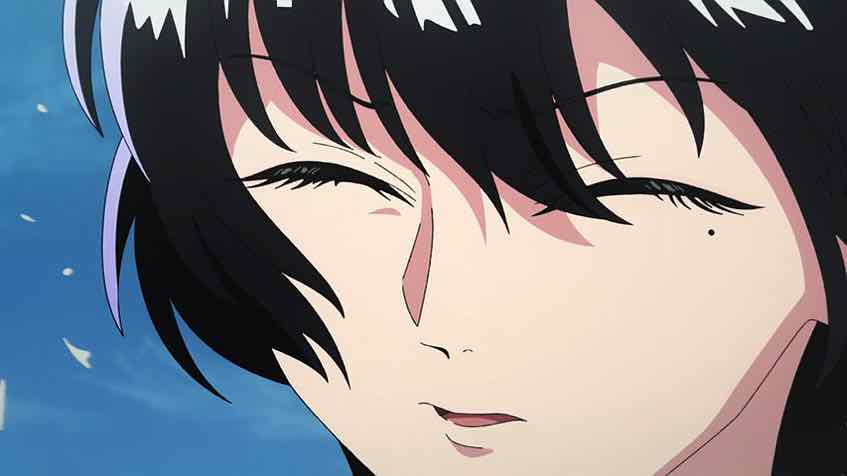

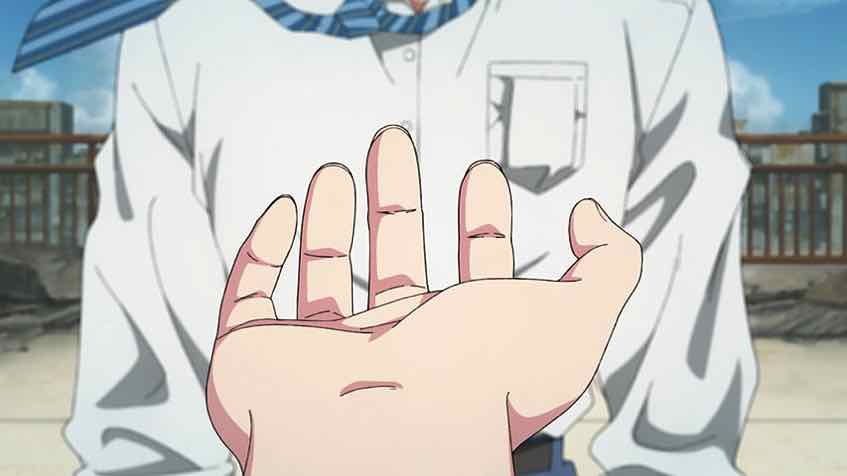
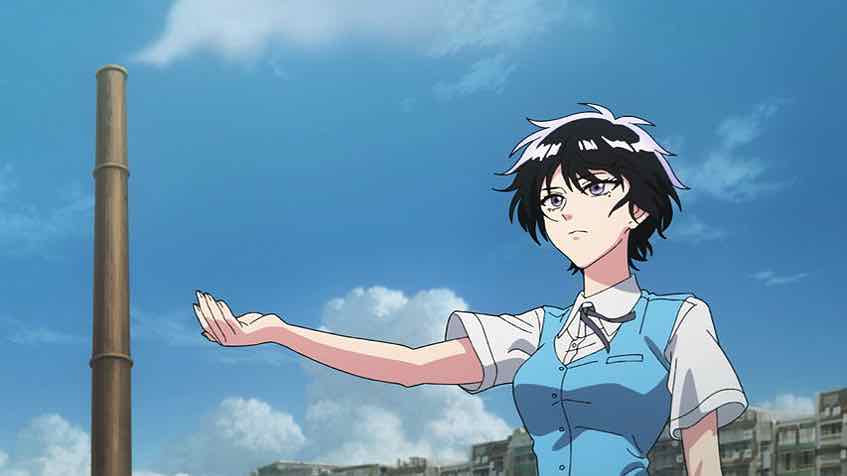
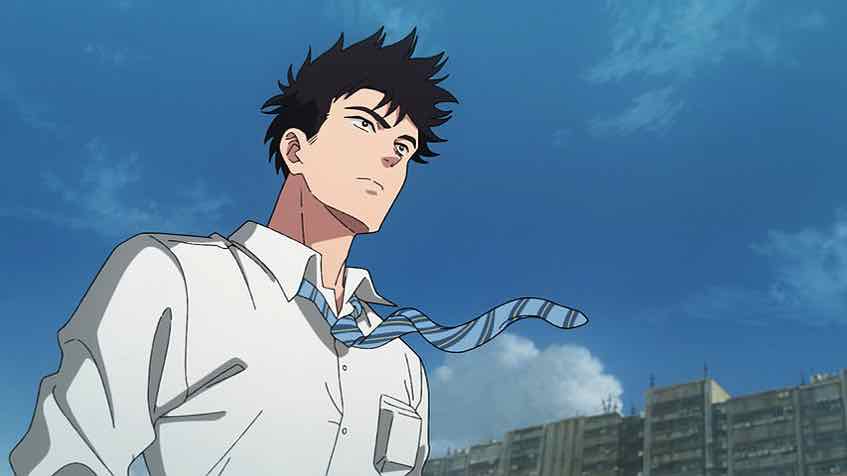
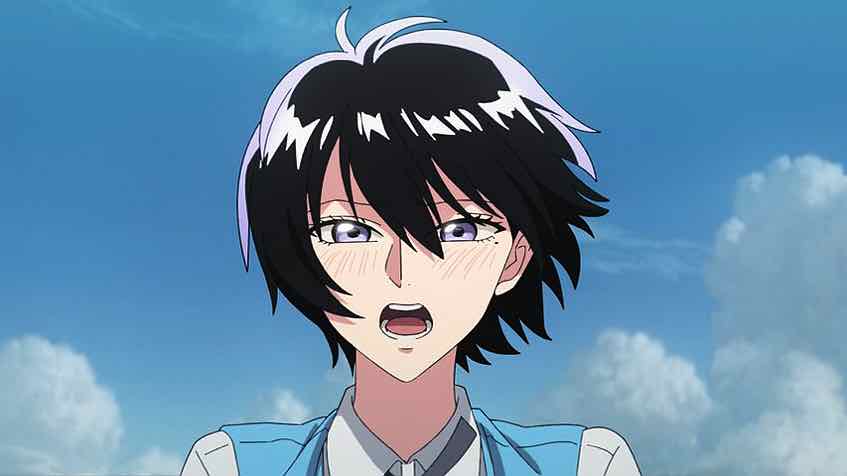
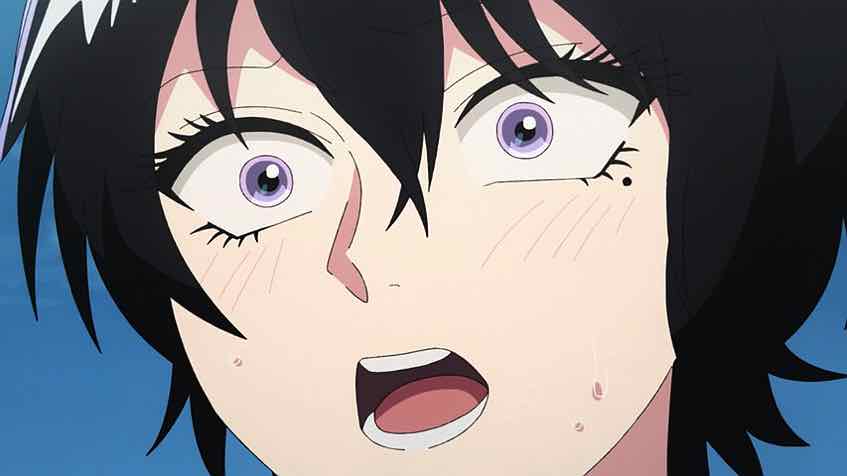
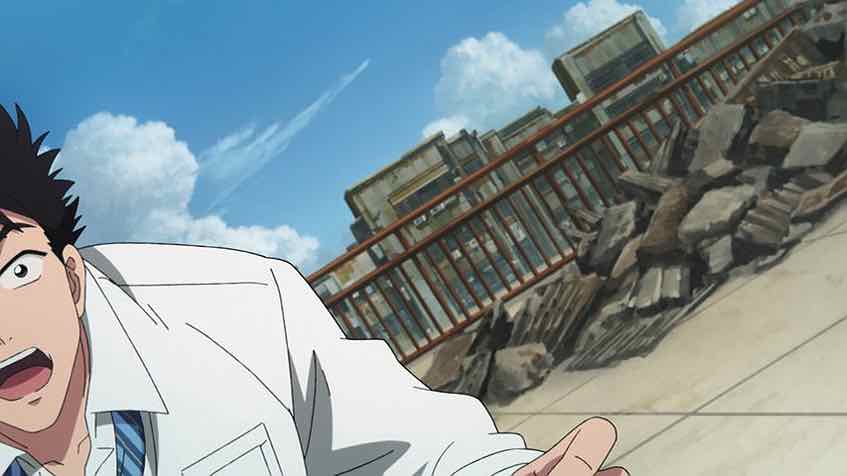

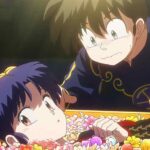
Nadavu
April 20, 2025 at 7:39 pmAs someone who hasn’t read the source material, I’m pretty happy with the pacing. Kujirai confronting Hajime with her feelings and knowledge of not being the original is a good place to be at the end of the third chapter, I feel. It’s like a romance show where you’re afraid they’ll stretch the will-they-won’t-they drama until the very end, and then seal it with a confession and no aftermath, but you’re pleasantly surprised that they get together fairly early on.
Vance
April 21, 2025 at 8:55 amIt’s clear based on how the current Reiko is still 32 whereas Kudo has aged and is her senior even though they’re in what is supposedly “The Second Kowloon”, which came straight through the manager of the realty firm’s mouth, that the world in Kowloon Generic Romance is unnatural, whether it be a simulation, a magical world, a dream world induced by experimentation, or something else I haven’t thought of that could still conceivably be true. With that out of the way, I can talk about what I really want to delve into.
I am a very detailed-oriented person, and what I’ve seen from the first three episodes of Kowloon Generic Romance, Kudo has an extreme fixation on Kujirai B to the point of being shackled by his love for her even though she most likely no longer exists based on these first few episodes. He might even regret falling for her on some level ’cause her death was so painful for him, which is why he is so fixated on things never changing. Thus, I get a sense that Kudo’s question to Kujirai B in Episode 2, “Wouldn’t it be painful to be in love, knowing it’d be gone someday?” could end up being really important or even THE most important question to the story since it’s clear he’s still reeling from what was probably Kujirai B’s death and given him placing a huge emphasis on nostalgia.
I believe the most important lesson Kudo must learn is that the joy and connection of love, even if temporary, outweigh the absence of such experiences and heartbreak. I believe that the last few episodes will likely have Kudo realizing the truth of this unnatural world and choosing to fall for Reiko despite her differences from Kujirai B, fully knowing that it won’t last due to the world in Kowloon Generic Romance not being real.
I expect an ending where Kudo can magically be with the current Reiko pure fantasy and not likely to happen unless the mangaka is actually a poor writer, but from what I’ve seen of the first three episodes, he is very talented.
Simone
April 23, 2025 at 6:55 pmI don’t know, I’m not a manga reader either and this DOES feel rushed to me. Plot points whiz past, the last scene of this episode seemed awfully quick as Reiko both brought up the matter of her doppelganger and confessed her love in a matter of minutes with Kudo barely reacting to either thing. I think it feels especially noticeable because with its focus on nostalgia and ambiance this seems exactly like the kind of show that should be very slow instead, spending its time simply building a vibe and letting us savour it. Which would in turn make the plot hit harder. Compare with e.g. Anne Shirley that is supposedly very fast paced too, but it bothers me far less since it matches Anne’s own energy very well.
sweejen
April 23, 2025 at 10:23 pmI’m loving the mystery elements, but for me this story is overwhelmingly about grief. How you navigate day after day through reminders of everything you lost and stumble on pockets of hope–if there’s a glass of tap water in the fridge then maybe it’s all just been a bad dream–that get deflated immediately–damn, it’s watermelon. I really feel for Kudo.
ruicarlov
April 24, 2025 at 8:15 amJust a small correction. Kowloon was torn down in the 90s, not 80s. It actually started being torn down the day I turned 7, on March 23rd 1993.